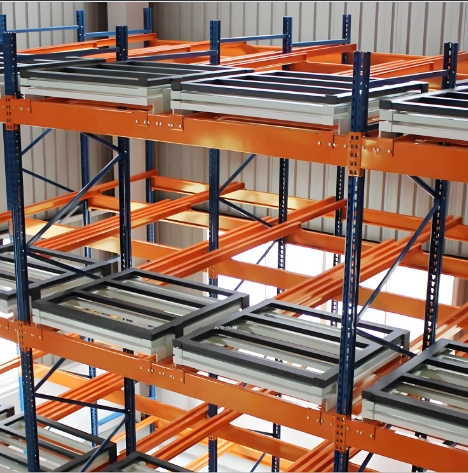With the increase in land costs, many companies' warehouses are also facing the problem of increased operating costs. How to better utilize warehouse space and increase space utilization to save costs has become an important issue to consider.
At this time, racking system with higher storage density has become the choice of most companies. So, which Storage Racking have higher storage density?
To maximize warehouse efficiency, storage racking is a crucial system. Skillful use of appropriate racking can increase warehouse inventory and operational efficiency. Here are a few racking systems with high storage density.

This high-density storage system comprises racks, shuttles, and forklifts. The shuttles automatically store goods within aisles, resulting in high efficiency. It's suitable for warehouses with relatively uniform cargo volumes and high logistics volumes, enabling first-in, first-out, and first-in, last-out storage.

2. Drive-through racking (drive-in racking):
The racks have no horizontal partitions, forming a continuous "aisle," allowing forklifts to drive directly into the racks to access goods.
This system is suitable for large quantities of uniform goods, especially those requiring a "first-in, last-out" storage system.
It offers high space utilization (fewer aisles, achieving a utilization rate of 60%-80%), is suitable for high-density storage, and reduces forklift travel distances.
It also offers limited access flexibility and requires high forklift driver skills.

3. Push-in racking:
Evolved from pallet racking, this type of racking utilizes a combination of rails and pallet trolleys. Multiple trolleys are stacked and connected between the front and rear beams. Stacked goods are pushed onto the trolleys from the outside, and subsequent goods are pushed inward. This provides high space utilization and convenient storage and retrieval.
The above types of warehouse racking all have high storage density and are suitable for warehouses requiring high storage density. Each type of racking has its own unique characteristics, and selection should be based on your business's specific circumstances.
 Wechat
Wechat
 Whatsapp
Whatsapp